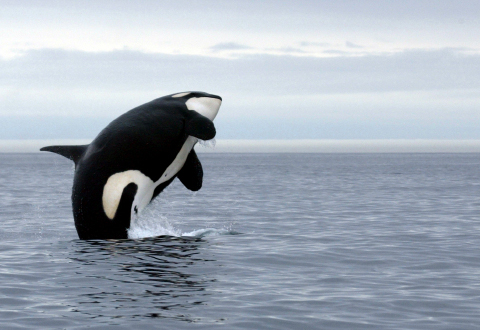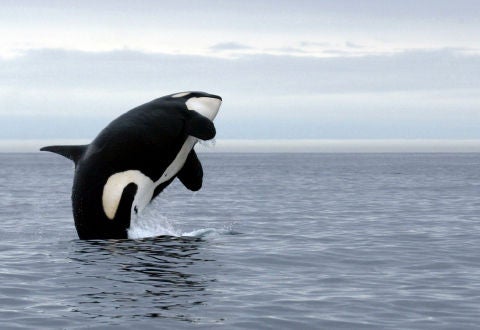
SCIENTIFIC NAME
Orcinus orca
DESCRIPTION
Without a doubt, the killer whale is one of the most distinctive marine mammals in the world. Its size — seven to nine metres long and between four and five tones in weight — and its striking black-and-white colouring, and long, rounded body make it unmistakable.
RANGE
The killer whale is a cosmopolitan creature, having been observed in oceans all over the world. They tend to concentrate in colder regions and are found in all of Canada’s oceans, as well as occasionally in Hudson Bay and in the Gulf of the St. Lawrence. In British Columbia, they have been seen throughout almost all marine areas including many inlets and narrow channels.
HABITAT
DIET
Throughout their world-wide range, killer whales eat a wide variety of prey, including squid, fish, sea turtles, sea birds, sea and river otters, sea lions, penguins, dolphins and other large cetaceans, such as the blue whale.
BEHAVIOUR
undefinedPRIMARY ECOSYSTEM ROLES
Photo Gallery

Without a doubt, the killer whale is one of the most distinctive marine mammals in the world. Its size — seven to nine metres long and between four and five tones in weight — and its striking black-and-white colouring, and long, rounded body make it unmistakable.
Learn more about Canada’s marine mammals such as the killer whale, Atlantic walrus, beluga whale, bowhead whale and harbour porpoise. Also, check out the Canadian Wildlife Federation’s Rivers to Oceans Week: Underwater Mysteries, June 8 – 14, 2008.
